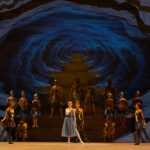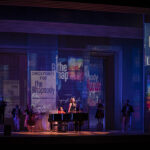New and Traditional Companies Meet Customer Demand for Projected Scenery
After more than 80 years in the scenery rental business, Grosh Backdrops and Drapery recognized the new handwriting on the wall.

More and more of the company’s customers came to them looking for digital scenery — backdrops that they could project, instead of renting and hanging a series of physical drops. From high schools to regional theaters, producers and directors wanted to enjoy the benefits of the trends they saw on Broadway and in traveling productions, and to replicate those dazzling visual effects for their audiences.
“It’s been clear that large-scale productions are using projected scenery, and certain customers of ours asked if we offer that service,” said Amanda Uhlein, president of Grosh Scenic Rentals. “We really started to think about it two and a half or three years ago. We started putting energy into coming up with a plan.”

Grosh’s ample stock of painted backdrops includes more than five thousand individual pieces, from scenery developed for specific shows to drops that create a setting for a presentation, corporate show or original production. “It’s a natural progression to take that to digital,” said JoAnna Smith, Grosh manager of business development and sales. “We knew what they wanted for their productions, and it just flowed for us.”
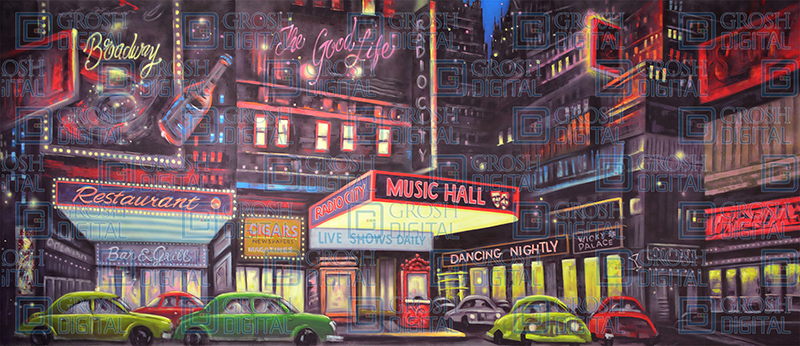
Grosh’s solution: Turn all of that hand-painted working stock into digital slides, eliminating the shipping, labor, and other costs involved in renting and using a canvas drop.
Providing static slides works well for many applications, but what customers really want is movement, Uhlein said. “We are also creating a brand new line of animated images,” she continued. “Our artists are creating a digital version, so you have snow falling, or clouds moving across a moonlit sky.”
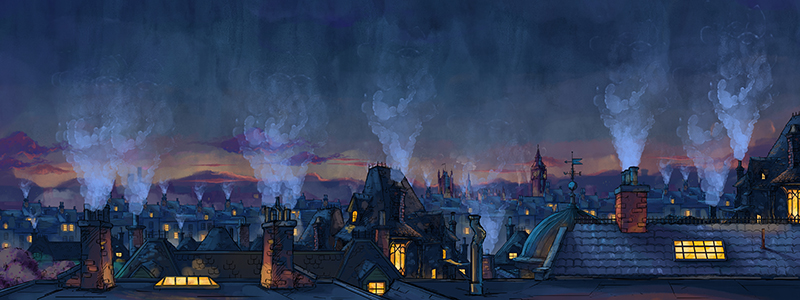
“You don’t want projections to take away from the actors, you just want them to enhance,” said Smith. “The bird will fly across, the snail moves, the winds are blowing the clouds, but it’s not a movie screen behind them. It’s a realistic environment.”
Taking existing stock and turning it into digital images may sound like a simple procedure, even on the scale of Grosh’s enormous inventory. The biggest challenge, however, was in development of the technology for image delivery to the client. Uhlein had to address the issue of copyright protection — making certain that the end-user could not keep downloaded projections and pass them around to others who might be mounting the same production.
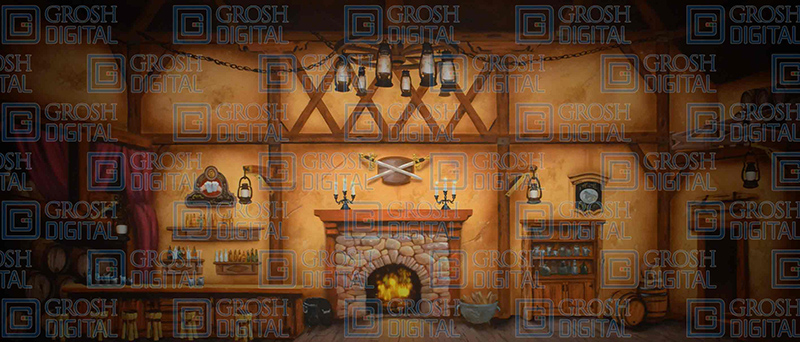
“We actually spent most of our time developing a digital media player,” Uhlein said. “Customers can go onto our website, select the content, and that content is delivered to the media player. So the customer can sign onto the media player and view their content.” When the term of their rental ends, the projections disappear from the customer’s account, eliminating the possibility of reuse.

A year of developing and testing resulted in an app compatible with any Windows or IOS computer, she said. “As most of the people that we work with are in schools, we want it to be an easy, user-friendly experience for them, Most theaters already have a projector; it’s all connected to their workspace, so they can see it right on the player. We’ve made it as user-friendly as possible. We can also work with people who have a Q-Lab or other media player.”
So far, the response from customers has been overwhelmingly positive, said Smith. “It has really taken off quite quickly. We expected it to be successful, but our customers just love it.” Early feedback indicated that clients wanted to rent some images from Grosh and combine them with projections they developed themselves, so Grosh made this possible as well. “They can create their own and upload that, and it works on our media player amongst our slides. No complaints! They are very happy about how easy it is to sign up and utilize.”
And, Smith acknowledged, you can’t beat the cost savings. “Digital is much more cost-effective. Clients can rent an entire package and get all the scenes they need for $750, instead of $350 per backdrop.”
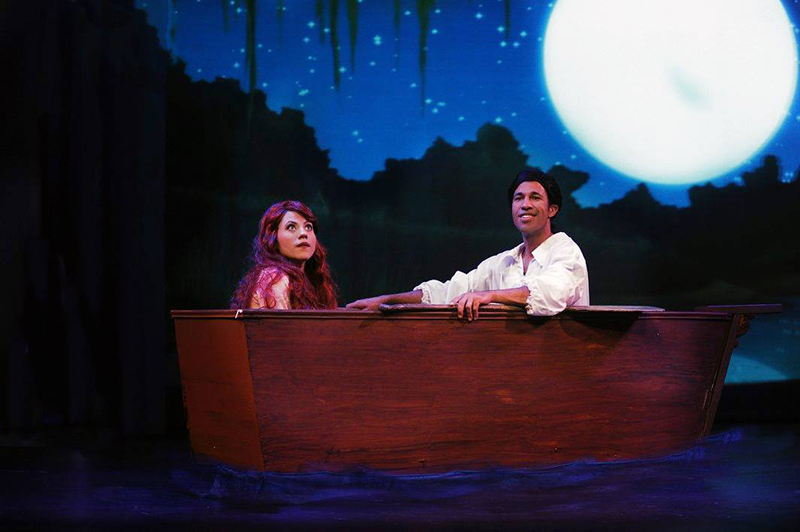
Scaling Big Shows for Anyone
Quentin Sanford made the decision to open Broadway Motion Design in 2013 after being inspired by the shift in scenic design on Broadway. Originally training as an actor and architect while running a small advertising design studio in California, he realized that his true passion was for the increased production value that projections offer. He began to consider ways to bring Broadway-quality digital scenery to smaller companies, from community theaters to middle schools.
“What are the big challenges for the community theater and high school productions?” he asked. “I went in to work one day in early 2013 and said to my design staff, ‘We’re going to take a giant leap. We’re going to start making projections for amateur theater. We’re going to be the first company to create digital scenery rentals.’”
Instead of spending years developing a digital backdrop inventory volume, however, he went straight to developing key partnerships.
“Within a few weeks, I established an exclusive relationship for Monty Python’s Spamalot with Theatrical Rights Worldwide,” he said. “Today, we have a staff of thirteen, and after five years we have more than 500 products, and we are selling globally.”
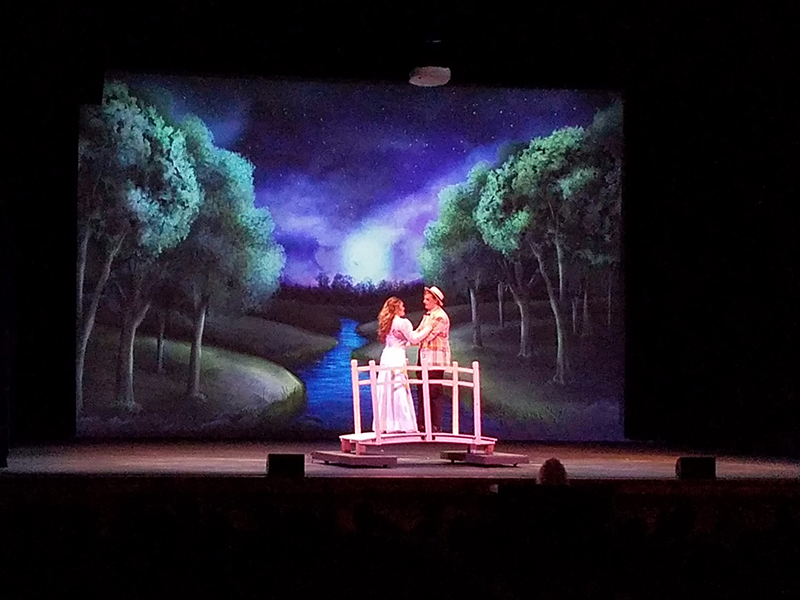
BMD created what it calls Scenic Projections animated video show packages to coincide with specific musicals. Sanford also established licensing arrangements with Music Theatre International and many other artists and agencies.
“What’s so important to BMD is that the relationship with our licensing partners and authors stays very strong, and that they are compensated for their literary works,” he said. “Forming these exclusive relationships required us to formalize certain copyright measures to ensure that all creative work is protected. To do this, we developed proprietary software.”
With the relationships in place, Sanford changed the company’s name in 2015 to Broadway Media Distribution (BMD), with a vision to expand his product offerings to include other digital products for theater. As the company’s chief executive and creative director, Sanford is currently working with his team on product development and continuing to scale the company’s Scenic Projections packages into several different categories, including Broadway Jr., Young@Part, and School Edition versions for smaller companies and schools.
“When you think of projections on Broadway, you usually think media server, rear projection and really expensive projectors,” he said. “How do you get that kind of Broadway quality to everyone? That’s the goal. First, the content has to be beautifully crafted with cinematic animation. Second, we developed our own software — StagePlayer for iPad, Mac and PC — to deliver our Scenic Projections as pre-cued products, allowing our customers to press just one button and go to the next cue.”
The other key is the projector, he continued. Small theaters don’t have the space to handle rear projections, so they need front-projecting, short-throw projectors. “So we introduced a line of affordable short-throw projector rentals,” he said. “Our mission is to be the production partner to our customers: available to help with the digital scenery and the hardware.”
Today customers in North America, United Kingdom, Europe and Australia use BMD’s Scenic Projections, and the company has its sights set on debuting several new products in the near future. “There’s an enormous opportunity in middle school, high school and amateur theater productions,” Sanford said. “We’re proud to call this our market. They all want to have that same exciting and successful opening night. We can make that happen for them.”
Randi Minetor is an author and freelance writer based in upstate New York.
Pictured below: Sample Grosh backdrops
